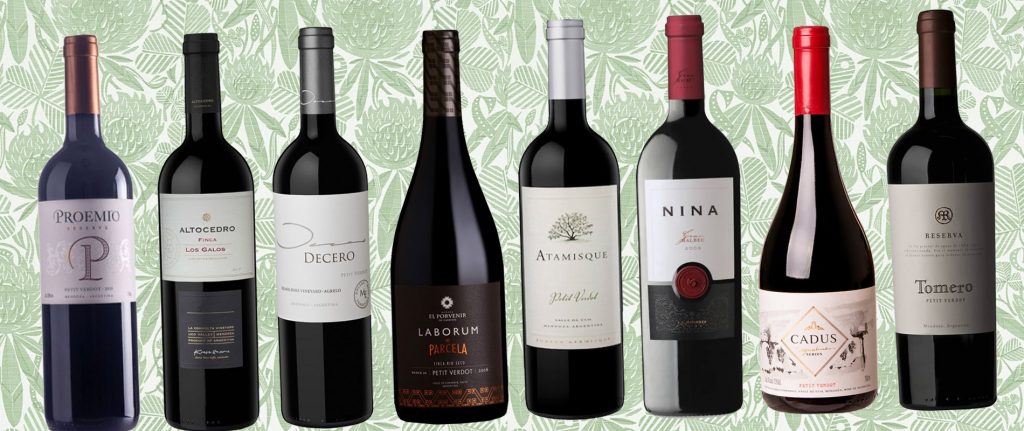The recent development of Argentine Petit Verdot is a fascinating phenomenon. Having already won over a band of faithful followers within the country it is now delighting palates overseas. For instance, on her last visit to the country, the prestigious wine writer Jancis Robinson declared: ‘I’ve tried more consistent Petit Verdots there than you find in Bordeaux.’
A group of winemakers is exploring the potential of the variety, work being followed closely by Francisco Rivero Segura, an Argentine wine blogger who in 2010 started the blog La Logia Petit Verdot, which pays tribute to the red. So who better to tell us about what’s going on with the grape in Argentine vineyards?
Why we like Petit Verdot
Petit Verdot was originally brought to Bordeaux by the Romans from warmer regions. There, it played a secondary role to more famous grapes such as Cabernets Sauvignon and Franc and Merlot, bringing its distinctive virtues to the major Bordeaux blends.
The name tells you a lot on its own: Petit refers to the size of the grapes, while Verdot reflects the fact that it ripens much later than other varieties.
Similarly to other varieties, not much is known about how it came to Argentina. One clue lies in the fact that it’s found among the oldest Malbec vineyards and in the years when it reaches its perfect ripening point it makes a significant contribution to the complexity of Argentine blends, adding warmth, tannins, structure and acidity.
Unsurprisingly, when it first appeared on a label it came from an old vineyard when Luigi Bosca launched Finca Los Nobles Malbec Verdot 1995.
‘Finca los Nobles is an old vineyard where the different grape varieties have been mixed up since they were first planted, something we wanted to reflect on the label: it’s a field blend of Malbec and Petit Verdot,’ says Pablo Cúneo, Director of Oenology at Bodega Luigi Bosca.
Early this century, several producers took the plunge with a pure argentine Petit Verdot varietal. One of the first to launch one, which has now become one of the winery’s iconic wines, was Finca Decero in Agrelo.
‘We planted Petit Verdot because it brings a lot to blends, but we found that because Mendoza is a warmer, drier region, Petit Verdot gets fuller with sweeter, gentler tannins than you find where it originally came from,’says Tomas Hughes, Winemaker at Finca Decero.
Little by little, more Argentine Petit Verdots arrived on the market. The first came from the more traditional areas of Mendoza and San Juan, along with a few from La Rioja and over the years, oenologists and agricultural engineers have experimented with planting in different latitudes and altitudes. Today, you can find Petit Verdots grown from Patagonia to the Calchaquí Valley; over 120 different labels that offer compelling evidence of how well Petit Verdot has adapted to different terroirs.
‘Petit Verdot has been a great challenge,’ says Francisco Puga, the oenologist at El Porvenir de Cafayate in Salta. ‘It’s difficult to get the balance between canopy and yield right in the vineyard, hard to get it to ripen consistently and hard to get the perfect blend of structure and acidity. But it’s a very promising variety that offers elegance, freshness, colour and very good structure.’
Argentine Petit Verdots to try
According to data from the National Wine Institute, 653 hectares in the country are under vine with Petit Verdot, of which 470 are from Mendoza with the rest scattered among the different wine regions of Argentina.
In the Calchaquí Valley, the moderate, sunny climate is ideal for the grape and it plays host to one of its most exotic versions, Laborum de Parcela – Finca Río Seco from Porvenir de Cafayate. La Rioja offers similar conditions: Bodega San Huberto has been producing a varietal there since 2002: Nina Gran Petit Verdot, a pioneer that became a classic.
In Mendoza, meanwhile, most wineries produce a version. Decero Mini Ediciones, in Agrelo, is one of the most consistent, with a floral character. Using grapes from Perdriel, Roberto de la Mota bottles a highly sought after and hard to find wine when he manages to sneak a few bunches away from those destined for this Unus red blend. Maipú also has several to offer, Proemio Reserve Petit Verdot from there is silky and profound.

It can also be found in many different corners of the Uco Valley. At its southernmost edge, in La Consulta, it is bottled in Altocedro for Finca los Galos Petit Verdot, to produce an intense, elegant high end wine, while José Regginato makes the easygoing red Aprendiz Petit Verdot.
In Tupungato, to the north of the valley, the French-style Atamisque is notable for its balance, while Cadus Winemaker Selection Petit Verdot, from Los Chacayes – in the middle of the valley – is wild and intriguing. Nearby, in Los Árboles, Tomero Reserva Petit Verdot is another stand-out, maybe the most classic of them all, with its mentholated profile.But whatever its style, there’s no doubt that argentine Petit Verdot has made a major impact on the national wine scene. Why not give it a try?



